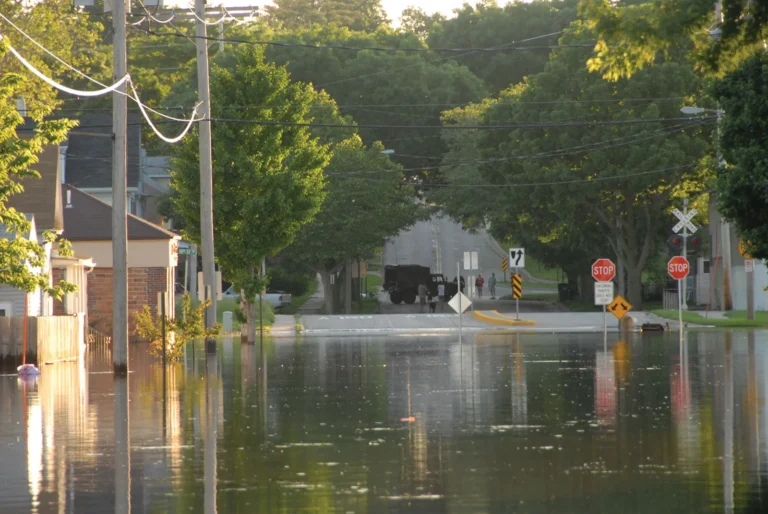Thriving Iowa small towns is a very interesting topic to explore. Bloomfield, Iowa, may lack some of the advantages of other small towns. It is neither on a major interstate highway nor near a significant airport.
Yet, it has managed to increase its population from 2,640 in 2010 to 2,682 in 2020, according to the latest U.S. census data. This growth is notable for a town situated in southern Iowa, just 11 miles from the Missouri border.
Tammy Roberts, Bloomfield’s community development director, explains that even if people don’t work in Bloomfield, they still choose to live there. This sentiment is echoed by the recent census data, which highlights a few small Iowa towns like Bloomfield that have bucked the trend of rural decline.
These towns, all with populations under 5,000 and not part of a larger metropolitan area, have managed to grow against the backdrop of an overall population shift towards urban centers.
Iowa’s Rural Innovation Grants have funded creative projects like community gardens and public art installations, making small towns more vibrant and attractive.
Table of Contents
ToggleFactors contributing to the success of these towns
- Infrastructure: High-speed internet, well-maintained roads, and adequate lighting.
- Local Attractions: Arts, recreational outlets, and community events.
- Health Care: Readily available medical facilities and services.
- Day Care and Schools: Adequate day care options and strong local schools.
- Safety: A sense of security and community well-being.
- Community Grants: Aggressive pursuit of development grants.
However, it’s important to note that replicating these successes elsewhere isn’t straightforward. Thriving Iowa small towns have unique dynamics, and what works in one place may not work in another.
Thriving Small Towns in Iowa – Audubon

Audubon is home to Albert the Bull, the world’s largest bull statue, standing at 30 feet tall and weighing 45 tons.
In contrast, Audubon, a small town in western Iowa, has seen its population decline from 2,382 in 2000 to 2,053 in 2020. Despite this, Audubon has made significant strides in community development. In November 2018, the town opened a $2.6 million community center, and there are plans for a $2 million expansion.
The community is supported by dedicated volunteers who organize events like movie nights at the local theater and the annual T-Bone Festival.
Sara Slater, Audubon County’s economic development and tourism director, attributes much of the town’s success to its strong volunteer spirit. Despite being located 75 to 80 minutes from the nearest metropolitan areas, Audubon has managed to sustain itself through a combination of community involvement and strategic planning.
Denver: Growth Through Education and Employment

The town has a strong tradition in high school sports, with local teams frequently winning state championships, boosting community pride and engagement.
Denver, another small town in eastern Iowa, has seen its population grow from 1,627 in 2000 to 1,919 in 2020. This growth is partly due to the town’s proximity to the Waterloo-Cedar Falls metro area, which provides ample job opportunities.
Denver has also invested heavily in education, with a $7.75 million bond issue approved in 2020 for a new middle and high school addition.
Scott Krebsbach, president of the Denver Community School District board, points out that Denver’s high school achieved a 100% graduation rate in 2020. The town’s strong educational system and low unemployment rates contribute to its steady population growth and economic stability.
Bloomfield’s Comprehensive Community Assessment

Bloomfield hosts the annual “Pioneer Day,” celebrating the town’s history with old-time crafts, costumes, and food, bringing the community together in a unique way.
One of Bloomfield’s key strategies for growth was conducting a thorough needs assessment, which included analyzing existing housing, income, and job opportunities. This assessment, funded by an $18,000 grant from the Iowa Economic Development Authority, helped identify both strengths and weaknesses in the town’s infrastructure.
Tammy Roberts, who was the director of Bloomfield Main Street during the study, emphasizes the importance of understanding both community and business needs. Although not everyone agreed on the priorities, the assessment provided a clear roadmap for future development.
Mayor Dan Wiegand, despite his controversial veto of a streetscape project, hopes that Bloomfield will continue to attract residents with its safe environment, local healthcare, and good schools.
Belmond: Adapting to Economic Changes
Belmond hosts the “Jingle Mingle,” a festive holiday event where locals dress up in Christmas costumes and parade through town.
Belmond, in Wright County, faced a significant economic challenge when the Eaton Corp. engine valve manufacturing plant closed in 2020, reducing the town’s workforce by 182. Despite this setback, Belmond’s population saw a slight increase from 2,376 in 2010 to 2,463 in 2020. The Belmond Growth Alliance is actively working to repurpose the former Eaton facility, demonstrating the town’s resilience and adaptability.
Belmond’s success lies in its proactive approach to economic development and community engagement. The town is leveraging its strengths and exploring new opportunities to maintain its vitality and attract new businesses.
Dyersville: Leveraging Cultural Heritage

Dyersville is famous for the “Field of Dreams” movie site, where visitors can play baseball on the iconic field used in the film.
Dyersville is perhaps best known for its connection to the 1989 film “Field of Dreams.” The town’s population has grown from 4,035 in 2000 to 4,477 in 2020, partly due to its ability to attract tourists and capitalize on its unique cultural heritage.
Events like the Field of Dreams Major League Baseball game broadcast by FOX Sports in August 2021 have brought significant attention and visitors to the town.
Dyersville’s Mayor James Heavens believes that having a compelling story to tell is crucial for small-town success. The town’s ability to execute plans effectively, combined with its cultural attractions, has made it a model for other small towns looking to thrive in challenging times.
Kalona: Celebrating Heritage and Community

The town is dubbed the “Quilt Capital of Iowa,” famous for its Amish-made quilts and hosts an annual quilt show that draws crafters and tourists.
Kalona, located just south of Iowa City, has a rich history and a diverse community, including Mennonite and Amish residents who contribute to the town’s unique character. The town’s population has grown steadily from 2,293 in 2000 to 2,630 in 2020. Kalona attracts visitors with its historical museums, festivals, and specialty shops, and benefits from its proximity to Iowa City.
Krista Hershberger, assistant director of the Kalona Chamber of Commerce, highlights the town’s friendly atmosphere and strong sense of community as key factors in its growth and appeal. Kalona’s success demonstrates the importance of preserving cultural heritage and fostering a welcoming environment.
Riverside: Creating a Unique Identity
The town hosts “Trek Fest,” an annual celebration with Star Trek-themed activities, attracting fans from all over.
Riverside has carved out a unique identity as the future birthplace of the fictional Star Trek character Captain James T. Kirk. This quirky claim has brought attention and visitors to the town, which has seen its population grow from 928 in 2000 to 1,060 in 2020. Riverside also benefits from a nearby casino, which provides grants for community projects.
The town’s ability to create a distinctive story and attract tourists has been instrumental in its development. Riverside’s experience shows that even small towns can find creative ways to draw in visitors and support local growth.
LeClaire: Home of “American Pickers”

The town’s Tug Fest is a unique event where teams from Iowa and Illinois compete in a tug-of-war across the Mississippi River, drawing crowds for the fun and friendly competition.
LeClaire, one of thriving Iowa Small Towns with a population of 4,710 in 2020, has gained national recognition as the home of Antique Archaeology, the base for the television show “American Pickers.” The town’s growth from 2,847 in 2000 to its current population highlights the impact of tourism and media exposure.
LeClaire’s annual Tug Fest, where teams from Iowa and Illinois compete in a tug-of-war across the Mississippi River, is another example of how local events can attract visitors and promote community pride. The town’s strategic use of its unique attractions has helped it maintain a vibrant and growing community.
Resilience in the Face of a Pandemic
The COVID-19 pandemic presented big challenges for small towns in Iowa. Many businesses were forced to close or adapt to new operating conditions. In Belmond, for example, the owners of Sugarpie Café and Bakery used the state-ordered closure to renovate their establishment and prepare for the future.
Rob Arnold, one of the owners, reflects on the importance of prioritizing community health and adapting to changing circumstances.
Other towns, like Humeston, struggled with the shift to online business models but found ways to keep moving forward. Business owners in Humeston worked together to promote the small-town feel and attract customers, demonstrating the resilience and adaptability of small-town businesses during the pandemic.
Empowering Rural Communities
Iowa has supported rural communities through programs like the Rural Innovation Grants and the Empower Rural Iowa Initiative. These programs provide funding for projects that enhance
Thriving Iowa small towns, support business development, and promote community engagement. The state’s efforts to support rural housing, high-speed broadband, and community revitalization have been crucial in helping small towns thrive.
Despite challenges, towns like Ogden are making use of state grants to fund various projects, from new fire trucks to playground equipment. Emily Clausen, Ogden’s city administrator, highlights the importance of state support in helping small towns like hers continue to grow and provide essential services to their residents.















